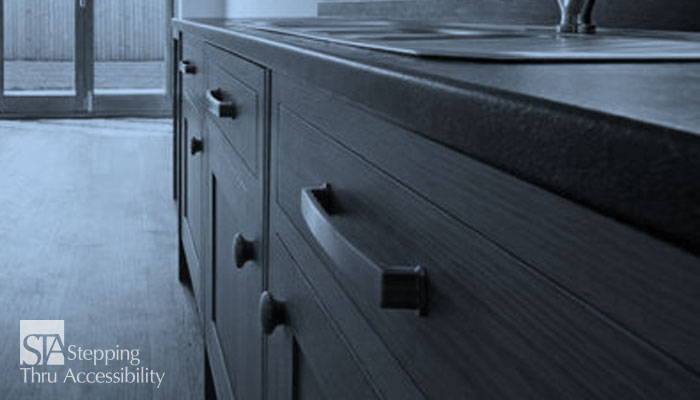Blog
Return to Blog »
Janis Kent, Architect, FAIA, CASp © February, 2017; updated June, 2021 One of the things that we may not pay too much attention to is counters – whether kitchens, kitchenettes, service, or work surfaces. Depending on the set up, we have either a side/parallel approach, or if we have knee/toe clearance below we can have a front/forward approach. And certain portions actually require a front/forward approach. If we have a counter or a portion of a counter with side/parallel approach we know that to be able to reach across, its surface has to be 34” maximum AFF. For front/forward approach, with knee/toe clearance below, we have more leeway on the height of the surface. For side or parallel approach we can reach back 24” maximum from the furthest projection and up to a height of 46”. If this is a narrow counter, 10” or less in depth, then the height increases to 48”. What we oftentimes miss is what exactly is the furthest projection? If the countertop protrudes beyond the face of the cabinetry below, then the nosing could be the outside limit of the projection. But, if there is hardware on the face of the cabinet, then the pull hardware could very well be the furthest projection. With front/forward approach we can reach back 25”, a bit further than side approach, but only to a height of 44”. If the surface is narrower, less than 20”, then the reach is 48” maximum AFF. Remember, with front approach, we can only reach as far back as our toes. So if we have a sink where the knee/toe clearance only extends the minimum required depth of 17”, if the faucet is placed further back on the counter, the faucet will not be within reach range for front/forward approach. What is confusing is that the ADA Standards state you are required to have either 60” or 40” clear in kitchens, depending on the layout, from the furthest projecting face of kitchen cabinets, appliances, and counters excluding the hardware, to the wall or other opposing items. Hardware is excluded. The difference is, this is about turning space rather than reach range and therefor has a bit more leeway since it is a different task. For reach range, projecting hardware is considered a protruding object which adds to the reach depth. In Summary At the beginning of the project and typically well into, we do not know or specify the convenience hardware on the face of cabinetry. What would make sense for cabinetry that is backed to a wall, is to have a standard detail where the full length of the backsplash is built out from the face of the wall about 2” to 3”. This backsplash does not need to be the full height to cabinetry above, but if the height is 43”, there will be enough space to place electrical outlets or switches on the face within reach range and provides latitude for convenience hardware selection. This will look much better than popping out a box a few inches from the face of the wall at the end of the project to get these elements within reach range. If the outlets and switches are placed horizontally, this pop-out can be lower yet and can even act as a narrow shelf which would be within reach range that can be used for small items. Just some thoughts to consider. Be aware that your local City or County may have additional requirements that are more restrictive and providing greater access than the State or Federal requirements. Also, this article is an interpretation and opinion of the writer. It is meant as a summary – current original regulations should always be reviewed when making any decisions. © Janis Kent, Architect, FAIA, CASp 2017Counters, Cabinetry, & Hardware
